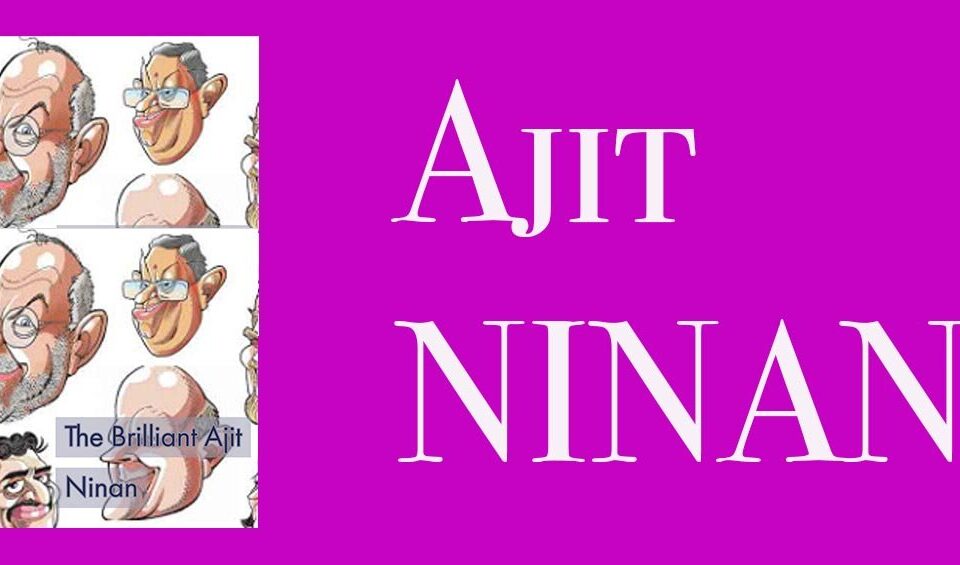Ghar is what the Gulzar-RD Burman-Kishore magic is all about. I have always wondered whether this is a film one should watch because it shows the transition of Rekha as an actress or just listen to the music. I think I'll vote for the music.
Leadership Development involves “identifying and measuring leadership qualities, screening potential leaders from non-leaders, then training those with potential.” The definition makes it sounds like a simple recipe with which to keep cooking up a steady flow of leaders. I wish it were.The Leadership Development function exists to help the organization gauge the future, create the model of leadership that will be needed to be successful today as well as to create a benchmark of what the future will demand of leaders. Once the benchmark is set, it is all about identifying potential talent that can be groomed to take on the mantle of leadership in future and then deciding what will develop those leaders to build the competencies that will make them successful in navigating the organization in a world we do not know yet. It is about preparing for a world we do not know, for skills we do not know about yet and using methods we do not always understand.
Webneetech.com is interviewing bloggers especially those who can share the secret of how to quit your day job and start making money by blogging. I am very jealous of people who make money in this fashion. If I am unable to do it, how can someone else do it - kind of jealousy. Or is that called envy? What's the difference between the two? Anyway... they asked me about my first blogpost and why I started blogging in the first place.
Several organizations have launched initiatives to promote Diversity. Why do we need to build diversity in the workforce? If the consumer group is diverse, having the same diversity represented in the employee groups makes it easy to develop the product which is aligned to the consumers. This makes sense for consumer goods but how does his pan out in case of industrial goods. Taking the argument further, if the buyer group is not diverse, does it still make business sense to drive diversity in the organization?In my opinion, the single reason to drive diversity is about providing a non discriminatory employment experience. Equal opportunity is the strongest reason. To be denied employment based on any criteria other than merit is discriminatory and illegal in many countries.How do we implement this in the workplace?
There are days when you are the pigeon and there are days when you are the statue. The trick lies in getting an early warning especially on the statue days, so that you can take in a deep breath and last out when your head is being held underwater. In my case the pigeon days are few and far between. It happens ever so suddenly and if I do not immediately take advantage of that tiny sliver of an opportunity I have only myself to blame. Horoscopes are helpful to take a sneak peek into the future. I read them regularly. My newspaper carries two of them (written by two different blokes) on Sunday.
And so, Bhaduri’s hero, Abbey passes out of IIM, Jamshedpur, gets into Balwanpur Industries, works at the township, chafes at the fishbowl existence he has to live there out of necessity, marries, gets estranged from, romances a woman or two, and slowly climbs up the corporate ladder. There is no discernible line of wit in the book; at best it is a collection of puerile jokes; the IIM gang comprises the usual suspects; the career climb is predictable, the women all coalesce into one another, come and go without leaving much impact. So what is the leavening factor in this ‘MBA’, a tenuous title at best? It’s lessons learned on the job which Abbey/Bhaduri imparts in a chatty tone that loses no relevance in the telling.Human Resource/Human Capital Practice/Personnel Management, whatever the term du jour is, it’s a fast moving track, creative and exciting, a track where you think as you run. To that extent, Bhaduri’s case histories with their solutions, make for interesting reading. The way Abbey handles the enforced VRS scheme initiated by the MNC that takes over Balwanpur Industries, is both informative and entertaining.
Two economists will never agree on what will yank the world out of recession. Two psychologists will also give you a simple answer on how to measure personality. What is personality? How you describe yourself is the inside view of personality (also called identity). It is all about your dreams, hopes and fears and how you wish to achieve your dreams and avoid the fear factor.
The morning newspaper and a cuppa chai is a ritual that is common to a large part of the human race. But people read it in their own manner. Some glance at the headlines and head straight for the sports page. So open the editorial page and shake their head disapprovingly at the affairs of the world. I head for the cartoons. I grab the newspaper and head straight for Ajit Ninan's cartoon. I look for two elements of wit in a cartoon - the visual and verbal. Ninan excels in both. Usually one lands up choosing between the two. Ajit worked for many years with the India Today group as cartoonist and illustrator, before moving to the Indian Express newspaper in 1992 eventually switching to Outlook one of India's top news magazines. He is now with The Times of India as their Chief Graphics Consultant. Ajit used to run a cartoon strip called Detective Moochhwala (and his tail-less dog called Poochh, which means tail in Hindi) for the childrens magazine Target. That comic strip had cult status amongst readers and it was amazing to see Ajit pack in a tight storyline and brilliant graphics in about 35-40 frames.
The quizmaster's question to you is, "Which fictional character lived at 221 B, Baker Street?" The answer is Sherlock Holmes. You know that. Of course you do. Created by Sir Arthur Conan Doyle, the first public appearance of Holmes was in 1887. Sherlock Holmes birthday is generally deduced to be Januray 6, 1854. Holmes lived with his good friend and chronicler Watson, before his (Watson's) marriage in 1887, and again after his wife's death. Traditionally, the canon of Sherlock Holmes consists of the fifty-six short stories and four novels written by Sir Arthur Conan Doyle. In this context, the term "canon" is an attempt to distinguish between Doyle's original works and subsequent works by other authors using the same characters.









